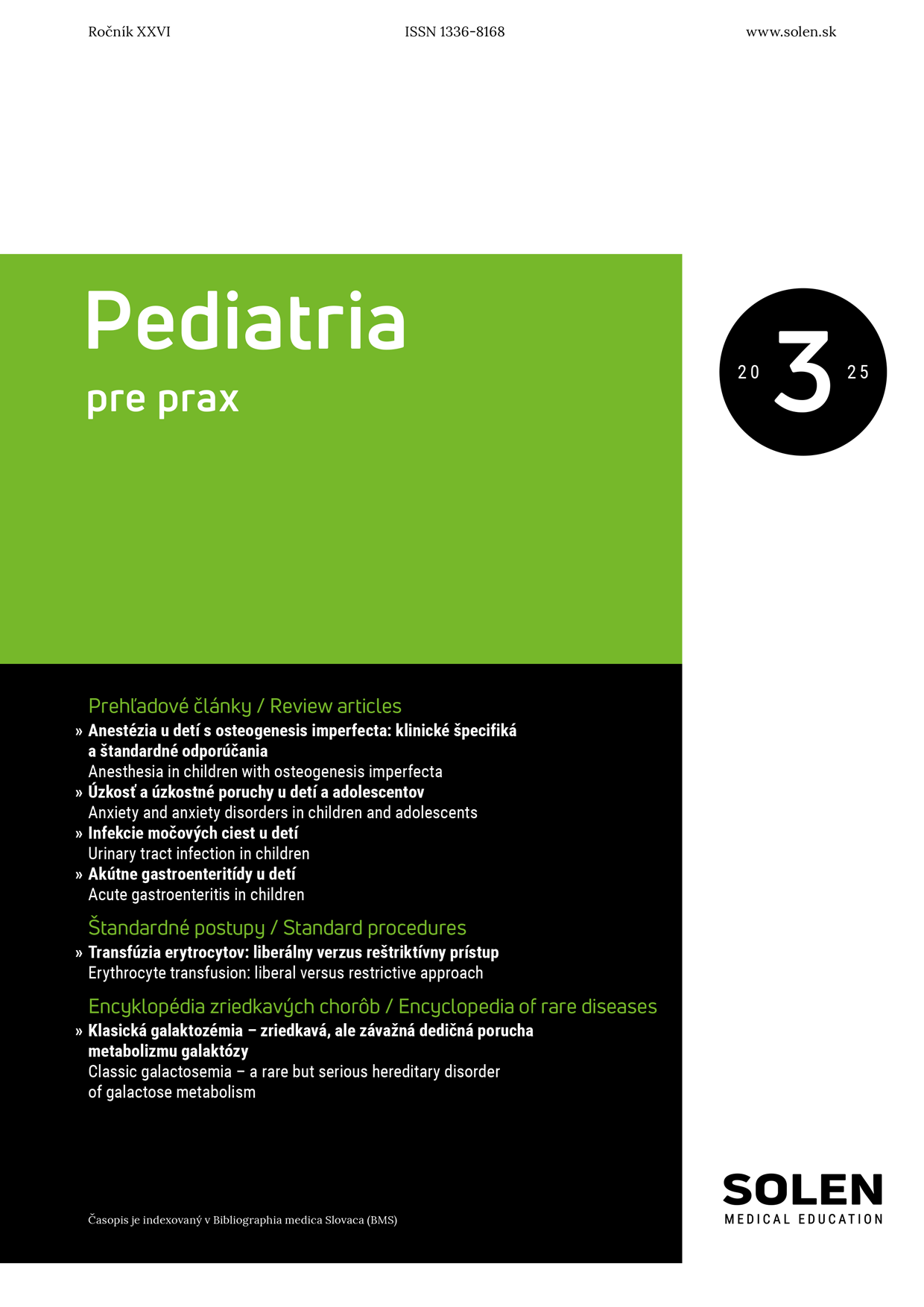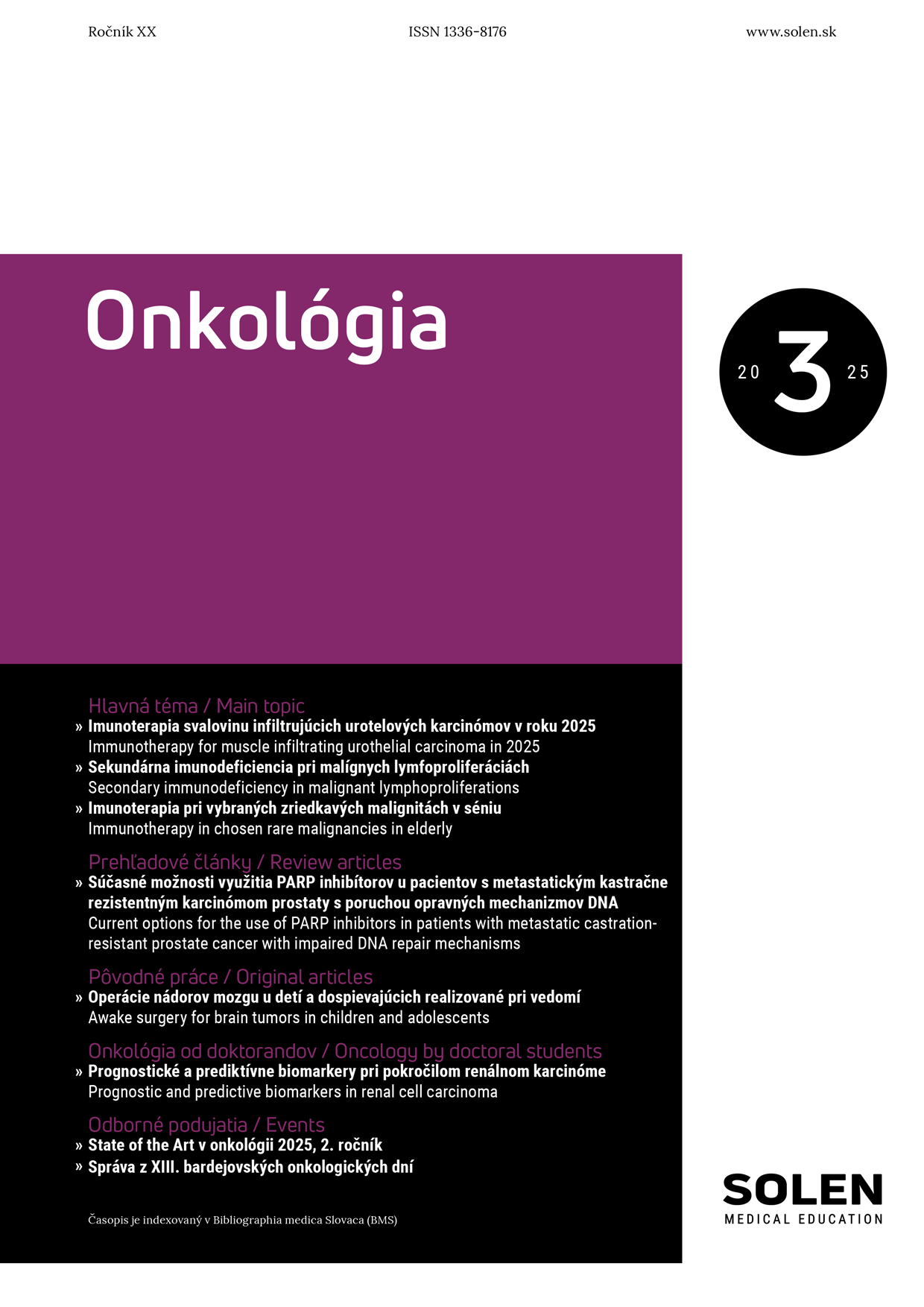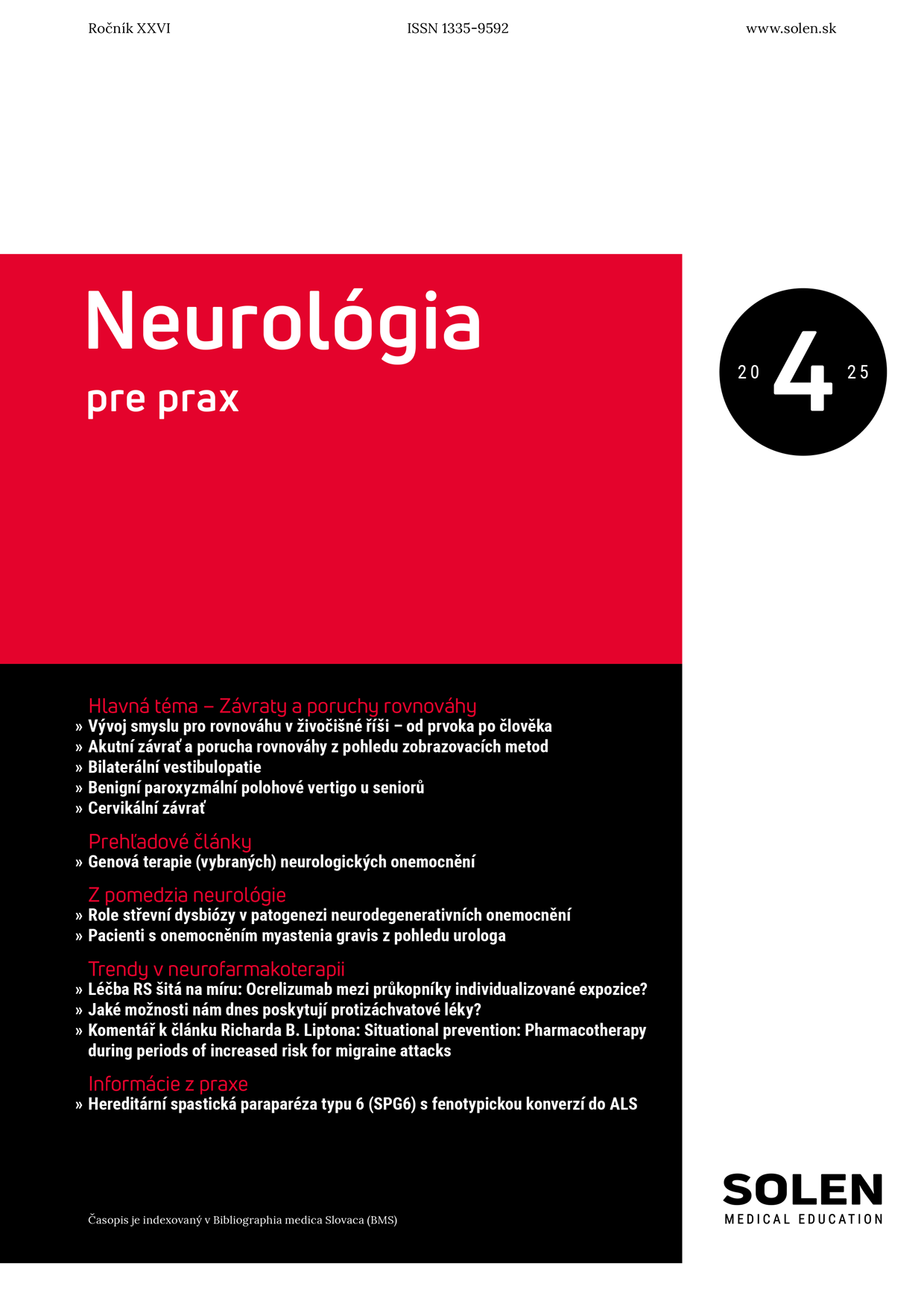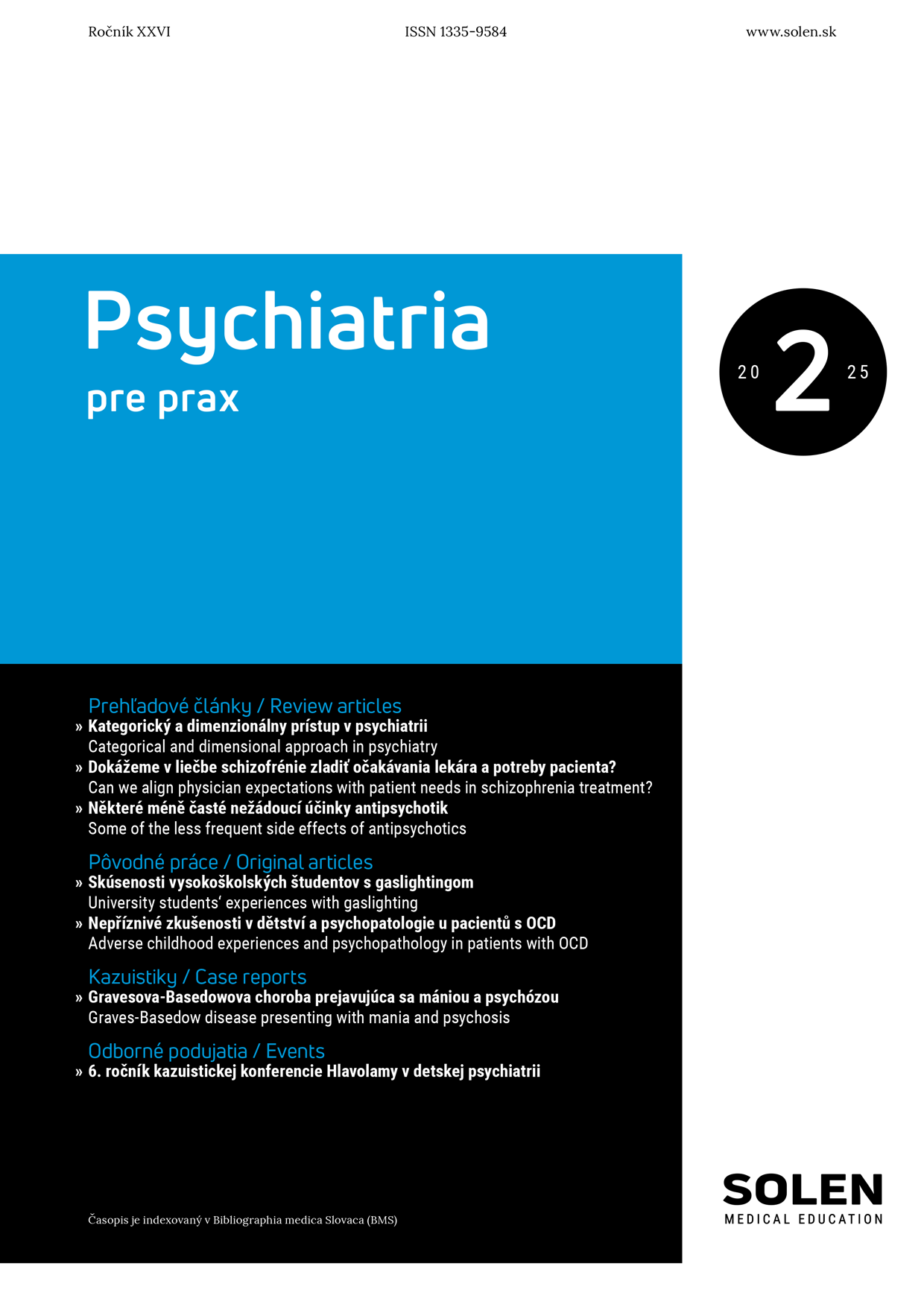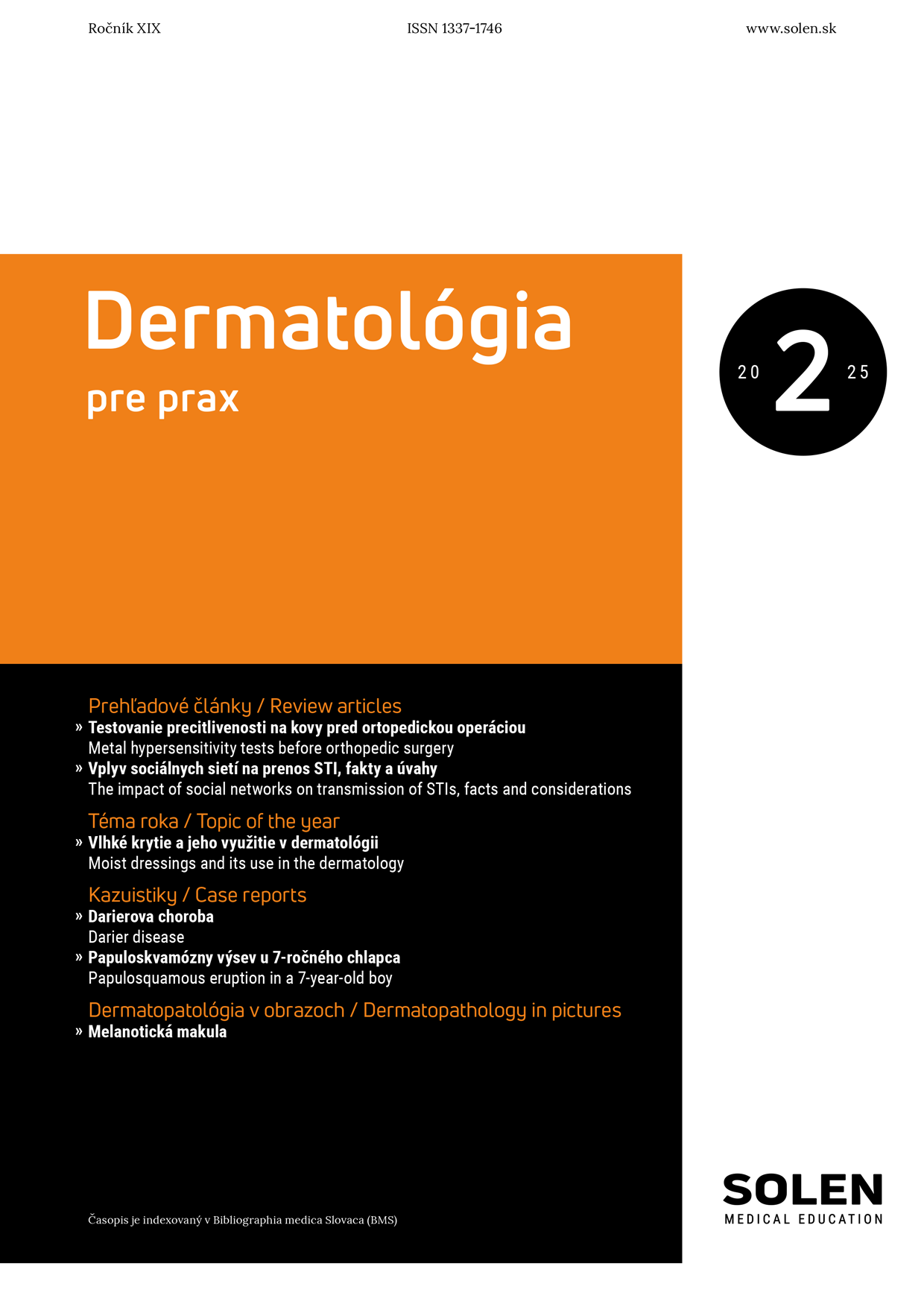Neurológia pre prax 3/2024
Dravet syndrome in adult population
Dravet syndrome (DS) is predominantly caused by a mutation in the sodium channel subunit (SCN1A). It begins in childhood but is a lifelong condition. In this article, we focus on the characteristics of adult patients with DS. From an epileptological perspective, the occurrence of epileptic seizures is crucial. In adulthood, there are mainly clonic seizures (generalized tonic-clonic seizures, tonic seizures or focal seizures to bilateral tonic-clonic seizures). They can be provoked by increased body temperature or by emotions. However, parents/caregivers of patients with DS often report other manifestations of the disease as very significant, often more limiting than the seizures themselves. These primarily include cognitive difficulties, learning disorders, behavioral issues, motor problems (crouch gait, parkinsonism, ataxia, abnormal postures while standing and walking), sleep disorders, and cardiac abnormalities. There is also a high risk of sudden unexpected death in epilepsy (SUDEP) in DS. The second part of the article is dedicated to therapy. Currently, there are recommendations for patients with DS. The first line of therapy includes valproate and clobazam. The second line involves specific drugs indicated for this syndrome, specifically stiripentol (Diacomit), fenfluramine (Fintepla), and cannabidiol (CBD, available in the Czech Republic as Epidyolex).
Keywords: Dravet syndrome, clinical manifestation, stiripentl, fenfluramin, cannabidiol (Epidyolex)


